Selective Dorsal Rhizotomy Treatment for Cerebral Palsy
Cerebral palsy (CP) is a group of conditions that affect how a child's brain and muscles communicate. The brain injury that causes this disorder often results in painful, disabling symptoms that make it difficult for a child with CP to fully stretch due to stiffness or spasticity.

Spasticity is a common symptom associated with cerebral palsy characterized by muscle stiffness and involuntary contractions. Sometimes, the only effective treatment for this spasticity, especially in the lower limbs, is a procedure called Selective Dorsal Rhizotomy (SDR).
An SDR is a neurosurgical procedure that involves identifying the nerve rootlets in the spinal cord that are sending abnormal messages and severing them. This procedure is presently the only surgical option for permanently reducing muscle spasticity in children with cerebral palsy or other disorders causing spasticity. A selective dorsal rhizotomy can lessen the long-term effects of high muscle tone on bones and joints and allow a child with CP to experience greater comfort and range of movement.
Because the first weeks after surgery are critical for establishing new patterns of walking and moving, the procedure is said to be ideal for a child who can understand and follow post-operative instructions or has availability for in-person therapy help.
If your child was born with cerebral palsy or another condition that causes muscle spasticity and you question whether medical negligence is to blame, you have a right to find the answers to your questions and seek the compensation you need and deserve to cover the costs of your child's treatment.
The Birth Injury Lawyers at Miller Weisbrod Olesky can help you take active steps toward providing a better life for your child by putting our substantial expertise and investigative resources to work for you and your family. Let us assist you in taking full advantage of your legal rights by holding all parties responsible for your child's birth injury.
What is Selective Dorsal Rhizotomy (SDR)?
Sensory nerves collect information from a muscle and carry it to the spinal cord. The spinal cord then sends motor nerves back to the muscles, causing them to contract. Typically, the brain communicates with the spinal cord to control muscle activity. However, in children with cerebral palsy the brain does have the same control due to the birth injury and as a result the spinal cord instructs some muscles to produce continuous contractions.
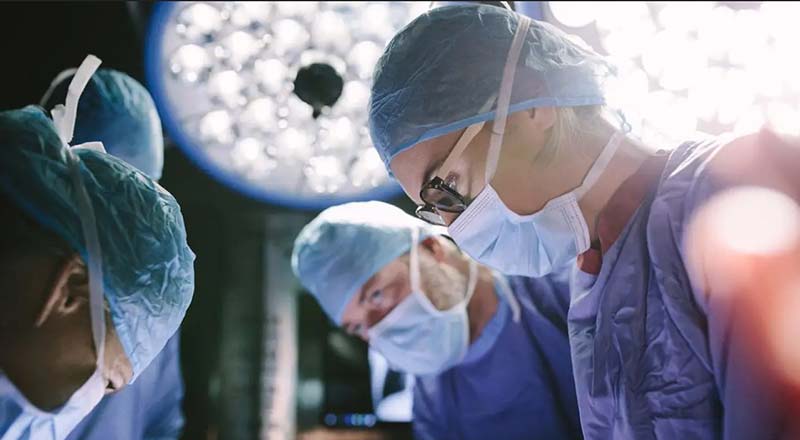
Selective Dorsal Rhizotomy (SDR) is a surgical procedure that corrects muscle spasticity caused by abnormal communication between the brain, spinal cord, muscles, and nerves. It is currently the most effective treatment option for permanently reducing spasticity in children and adults who suffer from CP and other conditions that cause muscle spasms.
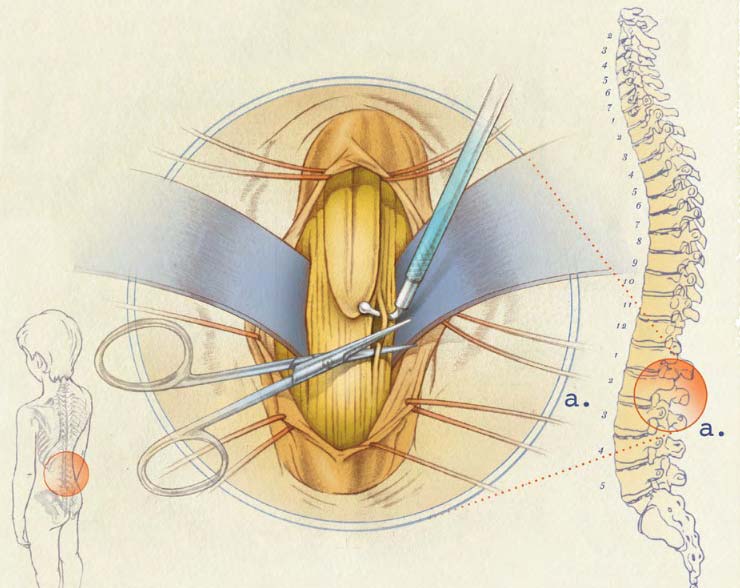
Selective Dorsal Rhizotomy is a very precise procedure that typically lasts several hours and requires general anesthesia. During a selective dorsal rhizotomy, the surgeon will create a small (two to four-inch) incision in the lower back to gain access to the spinal cord and expose the nerve fibers.
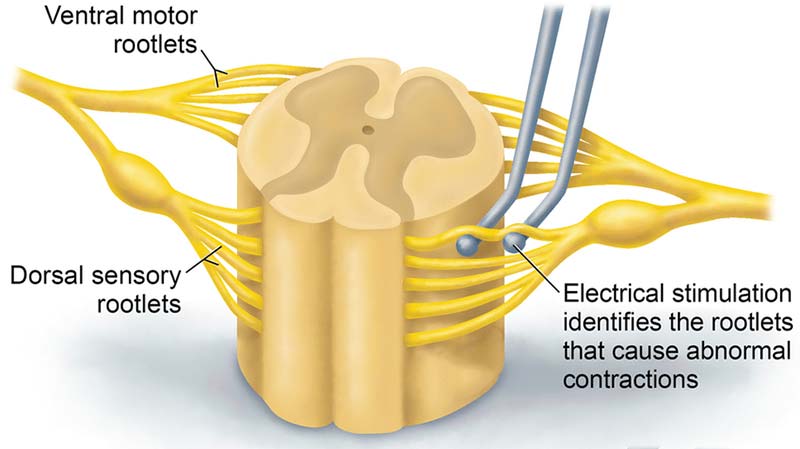
The surgeon then tests specific nerve roots using electrical stimulation to identify and sub-divide sensory nerves from motor nerves. Testing these nerves allows surgeons to only target the malfunctioning nerves without affecting motor nerves responsible for essential functions like leg movement.
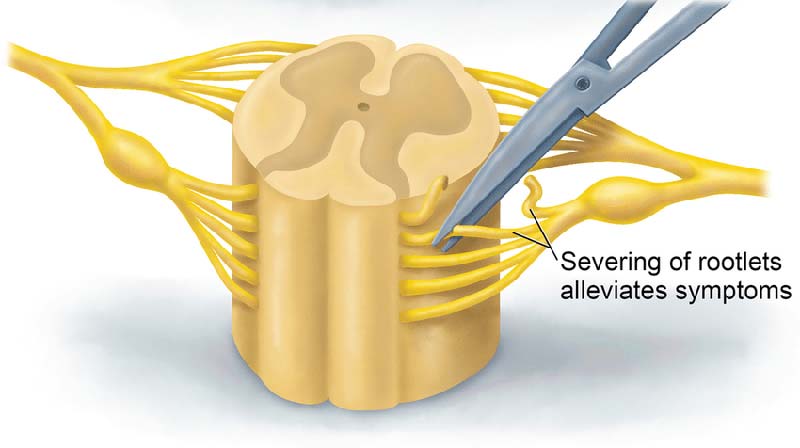
Once the specific nerves are identified, the nerve roots are carefully cut to decrease the abnormal signals that the spinal cord sends to the muscles. The surgeon will finish the procedure by closing up the membrane that covers the spinal cord, putting pain relief medication on the nerves, returning surrounding muscles to their original positions, and closing the incision.
In the first few days after surgery, it is recommended that children stay in bed. A medical professional may closely monitor your child to ensure they are recovering normally and provide appropriate pain management with medication given through IV.
Some children may experience mild headaches or have uncomfortable leg spasms. Before you leave the hospital, your child's doctor will advise you on what level of activity is permitted for your child and review medications and incision care with you. They will also let you know how frequently your child should attend follow-up appointments.
Potential benefits of SDR include:
- Improving how muscles move and function
- Increasing ease of movement and comfort
- Preventing long-term structural deformities
- Enhancing balance and improving flexibility
- Eliminating or reducing spasticity
- Improving walking patterns and speed
Although children with upper-extremity and lower-extremity spasticity may benefit from this procedure, the benefits are usually not as pronounced in the upper body. Because there are certain circumstances where SDR may not be the best option for decreasing excessive muscle tone, preoperative evaluation is crucial.
Selective Dorsal Rhizotomy requires those under 18 years of age to be:
- At least two years of age
- Be diagnosed with spastic diplegia, quadriplegia, or hemiplegia
- Be able to crawl or walk with or without an assistive device
- Be born prematurely or have typical signs of spastic diplegia
- Possess the potential for improvement in functional abilities
Children with good muscle strength in their lengths but who are hindered by spasticity are good candidates for Selective Dorsal Rhizotomy surgery. Older children and adults must be able to walk independently but feel inflexible or imbalanced during movement.
What is Cerebral Palsy?
Cerebral Palsy (CP) is a neurological disorder caused by damage usually due to a birth injury including HIE to the brain before, during or shortly after birth. In some cases, parents may notice signs of cerebral palsy soon after birth; however, in other cases, the disorder may not be noticed until a few years later.
The most common type of CP is spastic cerebral palsy, which makes it difficult for children with this condition to control movement in the arms and legs. Complications in brain-to-nerve-to-muscle communication are responsible for disrupting the balanced degree of muscle tension in people with spastic CP.
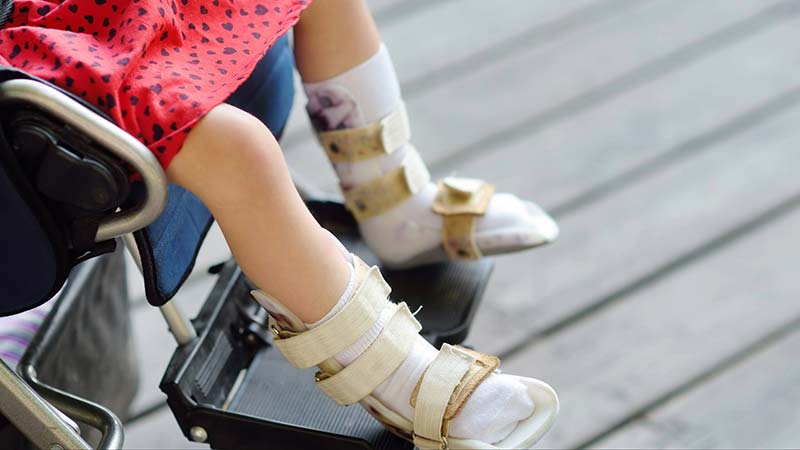
Most Common Causes of Spastic Cerebral Palsy
- Hypoxic-ischemic encephalopathy (HIE)
- Periventricular leukomalacia (PVL)
- Infant brain bleeds
- Neonatal infections
- Untreated jaundice
Spastic Cerebral Palsy is classified into three sub-types: quadriplegic, diplegic, or hemiplegic. SDR is typically performed on children who suffer from spastic diplegia or spastic hemiplegia. The most common candidates for Selective Dorsal Rhizotomy children with Spastic Diplegic Cerebral Palsy that affects the legs more than the arms.
The main difference between spastic diplegia and a typical gait pattern is "scissor gait," which is characterized by ankles that may turn inwards while walking, hips and pelvis that are often locked, and knees and thighs that may cross while walking. For these children, selective dorsal rhizotomy virtually always reduces spasticity and improves gait and leg function.
Children with severe spastic quadriplegia may experience an increase in physical comfort and independence after SDR surgery. However, SDR has a lower success rate for children with spastic quadriplegia and a higher risk of spasticity recurrence than for children with spastic diplegia.
Spastic hemiplegia is characterized by muscle stiffness and spasms in the upper and lower limbs on one side of the body. Selective dorsal rhizotomy can help children with spastic hemiplegia have better control over movements on the affected side by reducing spasticity.
Who is a Good Candidate for Selective Dorsal Rhizotomy?
To evaluate whether Selective Dorsal Rhizotomy (SDR) is suitable for your child, a team of experts, including a neurosurgeon, a pediatric orthopedic surgeon, a physical or occupational therapist, a pediatric rehabilitation medicine physician, and/or a nurse, will consider the following factors.
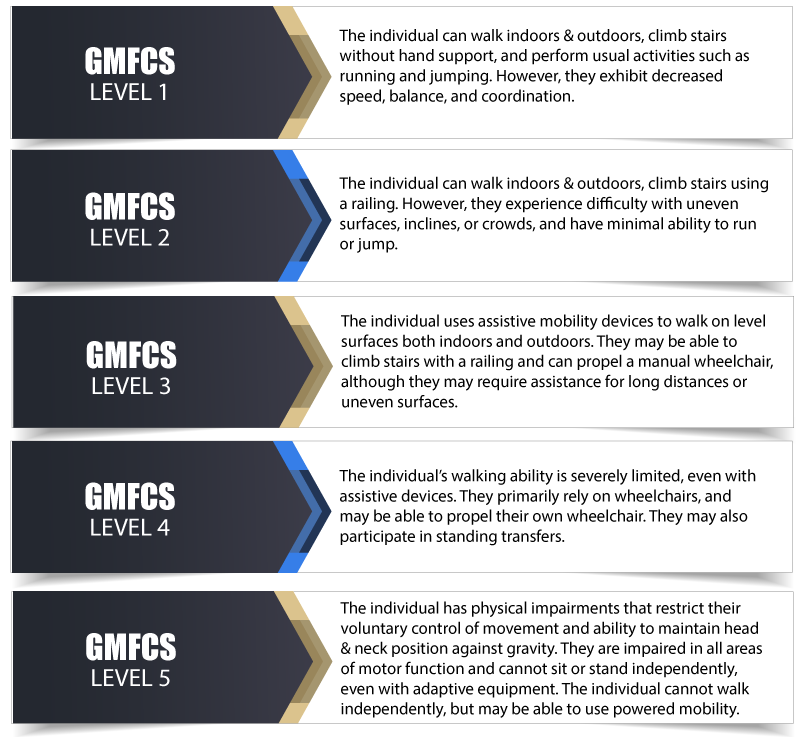
- Cerebral Palsy Type: The type of cerebral palsy your child is affected by. Children with spastic diplegia are the best candidates for SDR surgery.
- GMFCS Level: The mobility and gross motor skills of your child. Gross motor skills, such as sitting and walking, can be categorized into five different levels in children with cerebral palsy using the Gross Motor Function Classification System (GMFCS). Children at levels 1 through 3 who can walk and are expected to continue walking might be good candidates.
- Gait Analysis Data: Whether your child's CP induced abnormal movement pattern stems from spasticity or another movement disorder. A gait analysis plays an essential role in allowing surgeons to be more accurate in diagnosing motor disorders and providing treatment solutions. This important decision-making tool accurately identifies and quantifies gait deviations by measuring oxygen consumption and how much energy an individual uses when walking. Good candidates for this type of surgery typically require approximately 200 to 600 percent more energy to walk than others do.
- The Child's Age: The best candidates for SDR surgery are children ages 4 to 7 who suffer from spastic cerebral palsy. Although the target population for selective dorsal rhizotomy is children between 2 and 6, older children can also benefit from this procedure.
- The Child's Cognitive Abilities: After SDR surgery, extensive rehabilitation is crucial to ensure the best possible outcome for children living with cerebral palsy. Good candidates are cognitively capable of following directions and participating actively in therapy.
There are a few situations where a child may not be a good candidate for SDR surgery. These include:
- A child who has suffered meningitis
- A child with a congenital brain defect
- A child with congenital hydrocephalus that is unrelated to premature birth
- A child with some sort of familial disease (i.e., a child with hereditary spastic diplegia)
Even if your child is not an immediate candidate for SDR, a physician, and other healthcare professionals can provide you with useful information about any therapy or care your child may need to help with their diagnosis of cerebral palsy. If your child is identified as a good candidate for surgery, however, they will undergo a spasticity evaluation, which includes a physical examination.
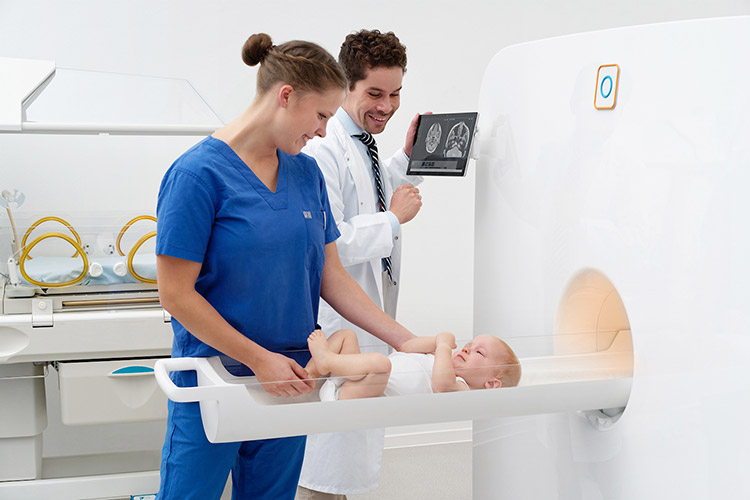
A medical professional may also request a Magnetic Resonance Imaging (MRI) scan to determine what areas of your child's brain are affected and an x-ray to assess hip stability. Post-operative rehabilitation is essential to truly benefit from SDR. Before surgery, your doctor should ensure your child will cooperate with the therapeutic regimen and devise a clear physiotherapy plan.
What Are the Benefits and Risks of Rhizotomy?
After SDR surgery, the reduction in spasticity in children with cerebral palsy is usually seen almost immediately. However, SDR surgery is not without risks. One of the most serious risks is the surgeon cutting too many nerve fibers and accidentally severing the incorrect fiber, resulting in paresis or paralysis of the legs and bladder.
Potential Negative Effects
- Wound infections
- Meningitis
- Cerebrospinal fluid (CSF) leaks from the wound
- Sensitivity of the skin on the feet and legs (usually goes away in 2 to 3 weeks)
- Temporary changes in bladder and bowel control
- Curvature of the spine
- Back pain
- Spinal stenosis
- Dehydrated spinal disks (black disks)
- Disk protrusion
- Improvements in speech and cognitive abilities
Despite these risks, there has been overwhelming evidence of positive improvement in certain children suffering from cerebral palsy after undergoing SDR.

Potential Benefits
- Walking tends to become easier
- Quality of life increases
- Reduced risk of spinal deformities in the future
- Better balance
- Positive impact on stiffness and knee extension
- Reduced hip flexor spasticity
- Less intense back pain
- Increased stamina
- Improved posture while sitting or standing
For children with CP caused spastic quadriplegia, selective dorsal rhizotomy may allow them to be able to use a potty seat and power a wheelchair on their own. Caregivers may also find changing their diapers or using adaptive feeding devices easier. Most children see an almost immediate reduction in spasticity after surgery and return to their baseline level of mobility one to two weeks after surgery. Early SDR can reduce your child's need for orthopedic surgeries in the future.
Post-operative Physical Therapy
Your child will begin Physical Therapy within a few days after the surgery. During physical therapy, your child's body will develop new nerve pathways that support better movement. Despite initial weakness in the months following SDR, most patients will quickly develop the ability to move better and quickly adapt to their new muscle tone with physical therapy. Therapists will work with your child about three or four times weekly to improve their range of motion, posture, muscle strength, and control.
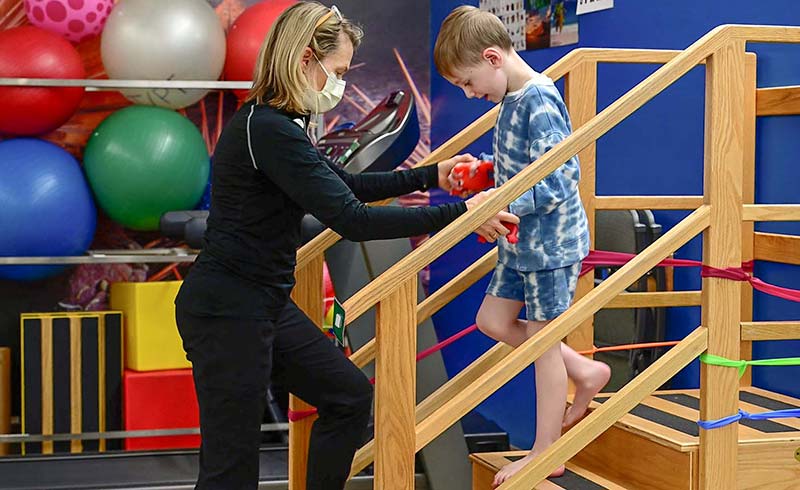
Physical therapy will involve exercises, games, and assistive technologies. Exercises are designed to stretch your child's muscles, ease movement, improve posture, increase strength, and develop balance. A physical therapist will also teach you how to do the exercises at home with your child. Some children may need additional treatments like orthopedic surgery to maximize mobility.
To address any concerns and additional needs, your child's care team will provide long-term follow-up care and work with your child to meet any additional needs. Through intensive physical therapy that typically lasts for at least six weeks, most children will gradually regain muscle strength and improve gait within six months. Miller Weisbrod Olesky's nurse-attorneys and registered nurses can work with you to help you find the treatment your child needs.
Medical Malpractice and Birth Injuries
Before, during, and after delivery, healthcare professionals are expected to know how to diagnose and treat health issues that can cause cerebral palsy. If a medical professional fails to uphold a high standard of care during the birthing process, they may be to blame if a child develops cerebral palsy.
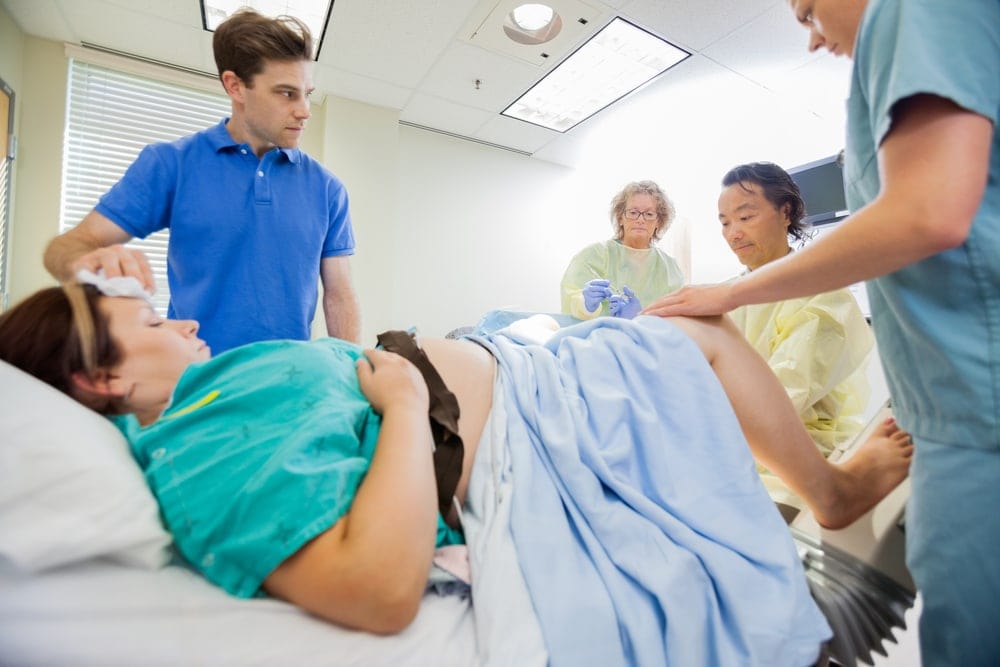
Medical Errors That Lead to Cerebral Palsy Birth Injuries
- Failure to detect signs of fetal distress, such as lack of oxygen (hypoxia)
- Failure to detect umbilical cord complications
- Failure to perform or delaying a needed cesarean section (C-section)
- Failure to detect and/or respond to signs of placenta previa or abruption
- Improper use of birth-aiding tools, such as forceps or vacuum extractors
- Failure to detect irregularities in fetal heart rate monitoring
- Failure to respond to newborn dehydration
- Failure to diagnose and/or treat maternal illnesses and infections
- Failure to resuscitate a compromised baby
- Failure to respond to a birth canal delay
- Failure to promptly address signs of uterine rupture
- Failure to detect a severe brain defect on a prenatal ultrasound
- Failure to treat jaundice, kernicterus, or meningitis
- Pulling with too much force on a child's head, neck, shoulder, or arm
- Mismanagement of labor and delivery
- Administering an excessive dose of a labor-inducing drug (Pitocin) or failing to recognize complications from the medication
The first person that comes to mind when a birth injury happens is the attending physician. However, depending on the facts of your situation, your doctor may not be the only party held responsible for your child's birth party.

Some of the parties that can be sued for your child's birth injury include:
- Obstetricians (OB-GYN)
- Maternal-fetal medicine physicians/specialists (MFM)
- Other obstetric professionals
- Pediatricians (including pediatric neurologists)
- Anesthesiologists
- Labor and delivery nurses
- Midwives
- Nurses
- Physician assistants
- Hospitals and healthcare facilities (including birth centers)
- Hospital administrators
- Other hospital staff
- Neonatal nurses and aids
- Neonatologists or pediatricians providing neonatal care
- Respiratory therapists
- Laboratory staff
A successful birth injury claim requires the plaintiff's lawyer to establish medical negligence legally by proving that a healthcare provider's substandard care caused harm. The plaintiff's lawyer will need to provide evidence of the following four legal elements of medical malpractice.
- Duty: When a physician-patient relationship is established, the physician owes the patient a duty of care.
- Breach: The healthcare provider breaches that duty when they deviate from the standard of care that would be expected of another reasonably competent physician in the same field and under the same or similar circumstances.
- Causation: The patient suffered injuries due to the healthcare professional's breach of duty.
- Damage: As a result of the healthcare professional's breach of duty, the patient suffered physician, emotional, or financial harm.
Clinics and hospitals may also be vicariously liable for the actions of their employees. The hospital may be held vicariously liable if it fails to make reasonable inquiries into the education, training, or licensing of an applicant or does not confirm the credentials of an attending physician.
In the event that hospitals fail to maintain adequate medical records, implement proper policies, or ensure that there are always enough nurses or support personnel on hand, they can face direct liability for any harm caused to a patient.
Recoverable Damages in Birth Injury Claims
Birth injuries, like cerebral palsy, have a life-long impact. If your child's cerebral palsy was caused by medical malpractice, you consider filing a birth injury lawsuit and seeking compensation to help you cover costs associated with your child's birth injury. Our birth injury malpractice attorneys can help you obtain the maximum compensation available in your case and build a strong case against those at fault.
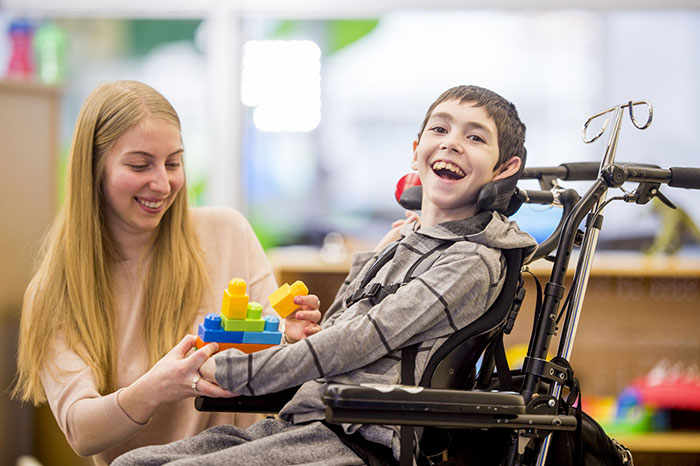
Compensatory damages are subdivided into two categories: economic and non-economic damages. Economic damages refer to verifiable monetary losses. Non-economic damages are more subjective than economic damages and represent intangible losses and suffering. Punitive damages may be awarded in cases where a healthcare professional’s actions are intentional or especially reckless. These damages are designed to punish the at-fault party and deter others from engaging in similar behavior.
Economic Damages
- Medical expenses, including the cost of ongoing treatment
- Expenses for physical, speech, or occupational therapy
- The cost of prescription medication
- Emergency treatment costs
- The cost of medical equipment or assistive devices
- Cost of special education and behavioral services
- Nursing or home care costs
- Any other injury-related out-of-pocket costs
- Home or vehicle alteration expenses
Non-economic Damages
- Pain and suffering
- Emotional distress and mental anguish
- Loss of enjoyment of life
- Lost wages for parents
- Loss of companionship and support
- Permanent disabilities, disfigurement, or impairment
- Future loss of income if the child will never be able to work
- Lost future earning capacity for parents who must leave work to care for their child
Statute of Limitations in Birth Injury Cases
A Statute of limitations specifies the maximum amount of time a person has to bring a lawsuit against a negligent doctor or hospital. This time frame can vary depending on your state and the type of claim you're filing. Your right to pursue legal action and recover compensation for your losses may be lost if you fail to file a claim before the deadline.
The discovery rule is an exception to this rule and extends the time frame within which the injured party can file a suit. Under the discovery rule, the clock doesn't start running until the injury is discovered or reasonably should have been discovered. Consult a birth injury attorney for more information about the time limits that may apply to your case.
Have Questions? Schedule Your Free Case Evaluation Today
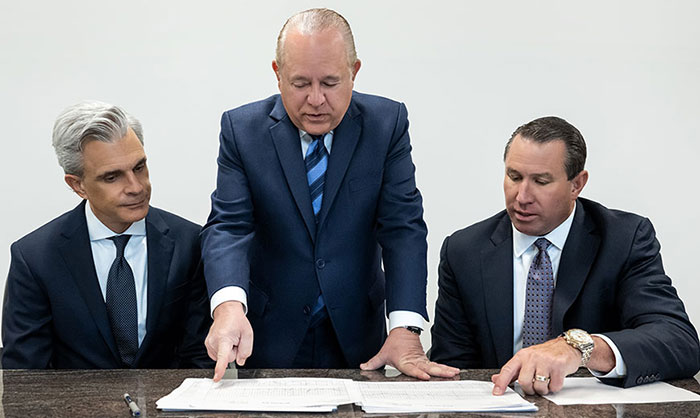
Mistakes made by negligent medical professionals and hospitals can change a baby's future and drastically affect a family for a lifetime. If your baby experienced trauma and was diagnosed with cerebral palsy, HIE, a brain bleed, or any other condition you believe may have been caused by medical negligence, our skilled and compassionate birth injury lawyers at Miller Weisbrod Olesky are here to help you.
Our nationally-recognized team of birth injury lawyers, registered nurses, and nurse-attorneys have assisted countless children and their families in receiving the financial compensation they need to cover the cost of their child's treatment and care. During your free consultation, we’ll investigate the facts of your case to determine how and why your child sustained a birth injury. Call us today at 888-987-0005 or use our online form to schedule your free consultation.
